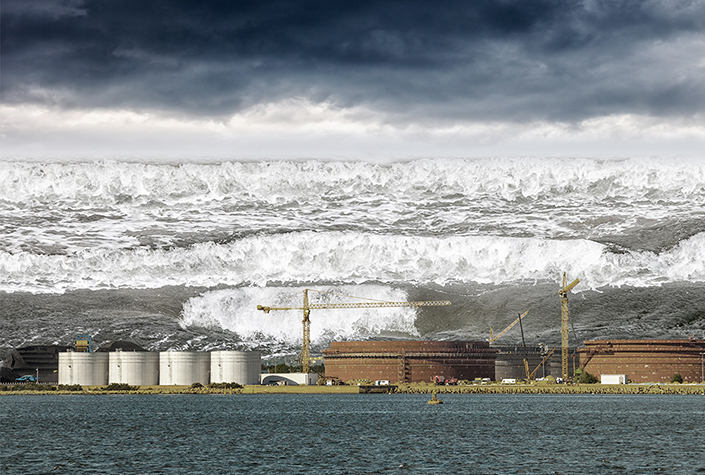Toxic flooding: Study aims to rank facilities based on risks to Gulf Coast

The Texas and Louisiana coasts are home to a multitude of industrial and petrochemical facilities, many of which are vulnerable to flooding and future sea level increases. Heavy rainfall and flooding like that seen during Hurricane Harvey can cause chemicals to be released into the air and water, and though many of these chemicals are harmful to human health and the ecosystem, the full extent of the risks they pose is unclear.
A new project funded by the Gulf Research Program of the National Academies of Sciences, Engineering and Medicine will investigate the transport of toxic chemicals after flooding and other disasters and ways to mitigate the risks of chemical releases, including nature-based approaches. Texas A&M University School of Public Health researchers Thomas McDonald and Garett Sansom applied for the grant, to improve understanding of this important issue.
The study, which involves researchers from the School of Public Health, the Texas A&M University colleges of Veterinary Medicine and Biomedical Sciences, Engineering and Architecture, and several organizations, will focus on contaminants associated with petrochemical facilities, such as polycyclic aromatic hydrocarbons and per- and polyfluoroalkyl substances, and their presence in two common and economically important fish species found in Galveston Bay, speckled sea trout and red drum. The presence and concentration of such contaminants can shed light on both recent chemical releases and those that occurred in the past. This project focuses on Galveston Bay because of the number of nearby industrial facilities as well as its potential to serve as a model for the Gulf Coast as a whole.
The research team will first conduct a six-month campaign to sample these fish and measure contaminants they contain. They will then use these measurements to determine how chemicals are transported in Galveston Bay and the fate of the selected contaminants, and then classify the risks posed by the various chemicals. The research team will then be able to rank various industrial facilities on the Texas and Louisiana coasts based on their potential to flood and release harmful chemicals. This work would also provide a baseline measure of chemical exposure that could benefit future related research.

